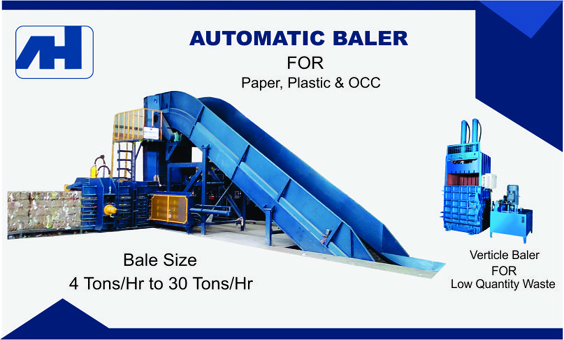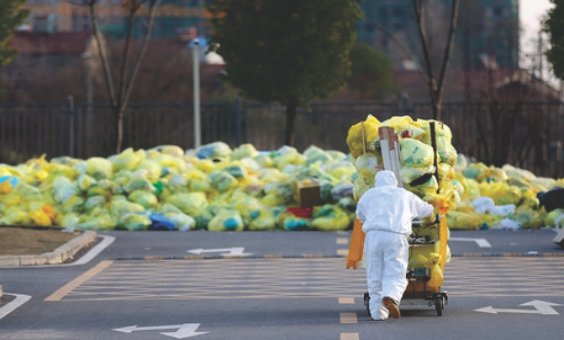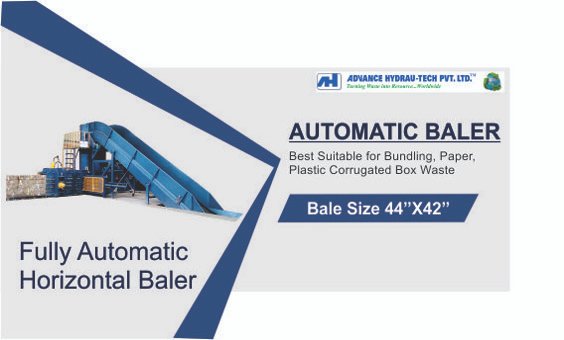Every year, nearly 500 billion plastic bottles are thrown away globally. Most of these end up in landfill where it may take up to a thousand years to decay and decompose, and possibly spills toxins into the soil and water. It’s evaluated that there are likewise 100 millions huge amounts of plastic garbage floating around in the seas causing threat to the marine life. It is estimated that that the consumption of plastics and polymers will grow by almost 5% per year globally, reaching 227 million tonnes in 2015.
One of the most commonly used plastics is the PET or ‘polyethylene terephthalate’, the material used in most bottles both for food (water, packaged food, salad dressing, juice, etc as well as non-food consumables (like shampoo, cosmetics, detergents, etc). In India, the use of PET bottles is increasing by more than 20%.
The used and discarded bottles are collected from households, offices and institutions or picked up from open landfill by rag pickers or small waste collectors and brought to a shopkeeper. The shopkeeper sorts them and sells to wholesaler who in turn crushes the bottles into bales for resale. Before putting the discarded PET bottles into the plastic baling machine, these go through a cleaning process which includes removing the name label or sticker using hot water bath and removing the caps of the bottles (which are of some other plastic material) either manually or using a neck cutter. The bottles are then sorted according to colour (transparent or coloured (blue or green) PET, and the rest as mixed colours PET) and separated from unwanted material (non PET material).
This sorted plastic waste then goes for baling. While choosing the plastic baler, bale specifications should be kept in mind. Both physical characteristics such as size and density of the bale and quality of the material baled, that is level and type of contamination are important. The bales size and density is pre-decided between buyer and seller so it is important to understand the requirement before baling the scrap. The bales plastic scrap should provide for optimum weight and size that can fill a complete truck load efficiently. The bales are tied with plastic scrap or non-corrosive steel wire.
Every year, nearly 500 billion plastic bottles are thrown away globally. Most of these end up in landfill where it may take up to a thousand years to decay and decompose, and possibly spills toxins into the soil and water. It’s evaluated that there are likewise 100 millions huge amounts of plastic garbage floating around in the seas causing threat to the marine life. It is estimated that that the consumption of plastics and polymers will grow by almost 5% per year globally, reaching 227 million tonnes in 2015.
One of the most commonly used plastics is the PET or ‘polyethylene terephthalate’, the material used in most bottles both for food (water, packaged food, salad dressing, juice, etc as well as non-food consumables (like shampoo, cosmetics, detergents, etc). In India, the use of PET bottles is increasing by more than 20%.
The used and discarded bottles are collected from households, offices and institutions or picked up from open landfill by rag pickers or small waste collectors and brought to a shopkeeper. The shopkeeper sorts them and sells to wholesaler who in turn crushes the bottles into bales for resale. Before putting the discarded PET bottles into the plastic baling machine, these go through a cleaning process which includes removing the name label or sticker using hot water bath and removing the caps of the bottles (which are of some other plastic material) either manually or using a neck cutter. The bottles are then sorted according to colour (transparent or coloured (blue or green) PET, and the rest as mixed colours PET) and separated from unwanted material (non PET material).
This sorted plastic waste then goes for baling. While choosing the plastic baler, bale specifications should be kept in mind. Both physical characteristics such as size and density of the bale and quality of the material baled, that is level and type of contamination are important. The bales size and density is pre-decided between buyer and seller so it is important to understand the requirement before baling the scrap. The bales plastic scrap should provide for optimum weight and size that can fill a complete truck load efficiently. The bales are tied with plastic scrap or non-corrosive steel wire.
Watch the Video: https://www.youtube.com/watch?v=Oin8bIEwjgY
One important consideration while making PET bottle bales is that the bale densities should not be too high to cause significant ‘sandwiching’, that is the clusters of bottles should be inseparable while pulling them apart by hand for sorting. The bales should be easily reopened for sorting, cleaning and finally crushing them into flakes.
Advance Hydrau Tech Pvt Ltd, India, manufactures machine for handling various quantity of plastic waste. Our Vertical Plastic baler can be used by small traders or daily collectors and produce less than 10 tonnes per day. Horizontal plastic baler can be used for baling more than 10 tonnes per day. Our triple action baler which compresses from all the three dimensions can give a productivity of 1 tonne/ hour and do not require tying.



